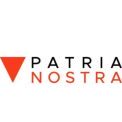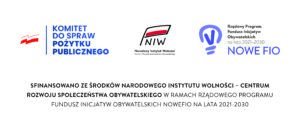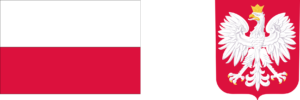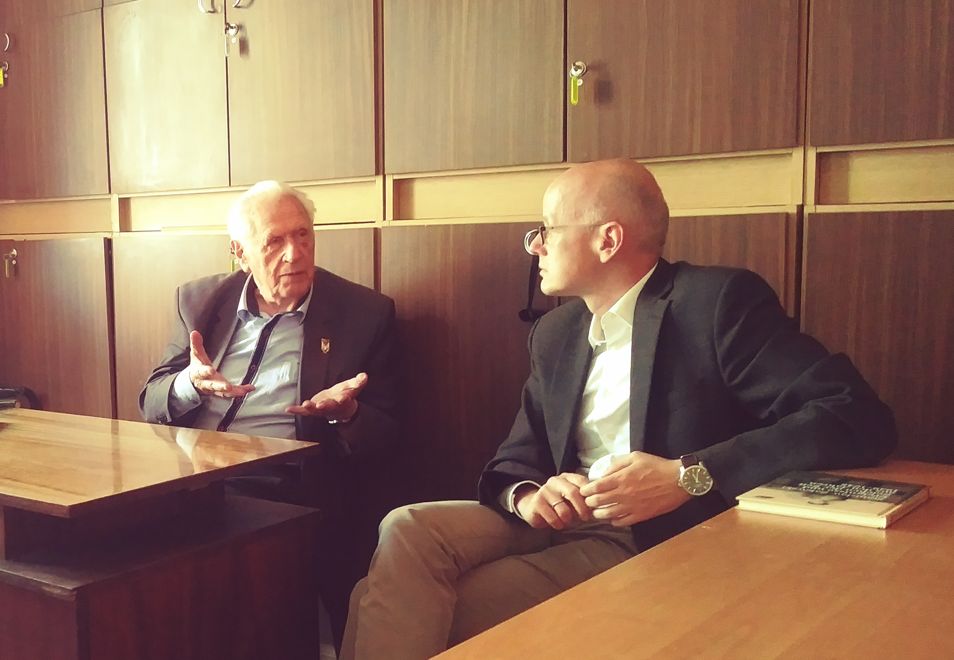

Thursday, June 15, 2023 will certainly be remembered for a long time by the participants of the study visit group of German students and scientists in Warsaw as part of the project “Who was the executioner and who was the victim?”, financed by NIW CRSO under the NEW FIO program.
After a visit to the former extermination camp in Treblinka, which aroused many emotions and reflections, it was time to meet one of the few living witnesses of the camp’s history. We are talking about Stanisław Zalewski, a former prisoner of the Auschwitz concentration camp and the Mauthausen Gusen I and Gusen II camps. The meeting took place at the headquarters of the Polish Association of Former Prisoners of Concentration and Extermination Camps, of which Mr. Stanisław is the president.
During Thursday’s meeting, he said, among other things: about his experiences in extermination camps and made his guests aware of why historical truth is so important in the context of who was the perpetrator and who was the victim during World War II. Stanisław Zalewski was very pleased with the fact that young people, mostly Germans, wanted to hear about such difficult issues.
First, Stanisław Zalewski told his war story chronologically.
– In 1940, I interrupted my studies due to the difficult financial situation of my family. My brother offered to recommend me to a car repair shop at ul. Waliców, where he worked. I got a job. Soon the plant was taken over by the Wehrmacht. We repaired German army cars. After the ghetto was established, the workshop was located within its premises. I had a special pass and an Ausweis, i.e. an identity document with a note that I worked for the Reich Army. I was therefore somewhat privileged in the event of a round-up.
Several Jews found employment in our workshop. They asked us to bring food from the Aryan side. However, my help in delivering food was very limited due to inspections. During the period when I worked in this place, the so-called of the Blue Police was on the outside of the ghetto. Then there was a German gendarme and a Jewish policeman on the inside. Everyone checked us, and the German officer was extremely thorough. In the workshop, we repaired cars and prepared new machines to work in difficult weather conditions and to start engines at low temperatures. One day, the tire inflator broke down. The soldier went outside the workshop, stopped the Jew and ordered him to manually inflate truck tires. When he collapsed from exhaustion, the soldier lost interest in him. He called another ghetto resident.
My friends and I created a group that we called Czterech with the letter S – there were three Staśeks and one Stefan. We got involved in the underground activities of the Union of Armed Struggle. We were assigned to a group called a little sabotage. We operated outside the ghetto. Among other things, we painted inscriptions on the walls of uninhabited houses, including the anchor of Fighting Poland. On the evening of September 12, 1943, I went to a meeting at a millstone factory in Praga, where the father of one of my colleagues was the economic manager. We had a hiding place there in the basement. In the morning, Stefan and I went out to the action near my place of residence at ul. Olszowa. We painted inscriptions on the walls of the building of the former State Supplemental Command. People rarely went to this place. So we were painting peacefully until suddenly a German gendarmerie patrol appeared. We were told to put our hands up and we were arrested. Our belts were taken from us and we were taken to the police station at ul. Szeroka. From here we were taken to the building of the pre-war directorate of state railways, opposite the current department store. From there, in a truck accompanied by four guards, we were transported to the Gestapo headquarters in al. Szucha and prisoners in cells. We stayed up all night. The prisoners could be heard groaning. In the morning, an older gentleman who spoke Polish well came and called us in for questioning. The interrogation rooms were on the first floor, and the cells were on the ground floor. On the way, I was made to understand that I was young and if I told how it really was, I would go home. I even believed him, but when I entered the interrogation room, my illusions were gone. In front of me was a table at which an SS officer was sitting. I stood in front of the table, flanked by two bruisers with clubs. The interrogation began: name, surname, address, until we got to painting. If the officer didn’t like the answer, he waved his hand and then the man standing on my left started beating me. When he waved his other hand, the bully on my right was beating me. Stefan was being examined in front of me. After the arrest, we agreed what we would testify to.
Either they believed what we said or they had something more important to do, because we just got a good beating and went back to our cells. In the late afternoon, together with other prisoners, we were transported by truck to Pawiak. One day we were taken again for interrogation in al. Szucha. We said the same things we had testified to before and were given a good beating again. Pawiak was a harbinger of the concentration camp… After three weeks of stay at Pawiak, a transport was formed in an unknown direction. On October 5, 1943, prisoners were gathered in a large room and a search was carried out.
Then we were loaded onto cars and taken to the station. As I later found out, it was the Gdańsk Railway Station. There we were literally packed into freight cars with two small windows. The crowd was so tight that when someone wanted to sit down, the rest had to move to the wall. If someone stood up, another could sit in his place. The train started moving. By the names of the stations we passed, we realized that we were going towards Krakow. We were not given food. Physiological needs were taken care of in the corner of the wagon. We arrived in Oświęcim late at night. Several people in our wagon died, and some people could barely stand up. The living got out of the wagons and the dead were carried out. We were lined up in fives in a long column. There were SS men with dogs on the sides. We went towards the camp and reached a gate with the inscription Arbeit macht frei. It was known that we were in the famous Auschwitz concentration camp. We were placed in a block intended to be inhabited by prisoners.
Our transport was tattooed in an unusual place, on the inner part of the left arm. Several transports of people were tattooed this way. To this day it is not known why. In my opinion, this is how prisoners who were suitable for work in arms production were tattooed, because most of those who came with me had some contact with mechanics. After the tattooing, the haircut began. Then disinfection and dressing in striped uniforms. We received shirts, long johns, trousers and jackets.
I spent a month in Auschitz. During this period, we were used to work on the further expansion of the camp. At first, we unloaded wagons with construction materials. I had to carry bags of cement weighing 50 kg. It had to be done in a hurry. Anyone who fell and could no longer get up from exhaustion was killed. At the beginning of November we were gathered in one barracks. At dawn we were placed in wagons adapted to transport live animals. This is how we arrived at Mauthausen in Austria. I was assigned to the Messerschmitt commando. At the beginning, we transported machines and equipment from the railway ramp in Gusen to the hall. These were devices and assemblies for machines intended for assembly. After the foremen set up the machines, I was assigned to the production group in the adit, that is, in a corridor carved into the mountainside. Some bands were produced there. At that time we didn’t know what they were used for. They were probably components for Messerschmitt aircraft or V2 rockets.
In the Messerschmitt commando we worked ten hours a day. We got up around 5.00, then there was a morning roll call, then breakfast in the form of a bowl of unsweetened coffee with a tiny addition, assembly, division into work commandos and march from the camp to the workplace. We walked in fives, at a steady pace. At the gate, the SS man counted the prisoners in the commando led by the capo. Dinner was also different. He was either brought to the workplace or we returned to the camp to eat in the barracks. The meal had to be eaten very quickly, sometimes not everyone had time.
Then we went to work and returned to the camp in the late afternoon. Another count at the gate, changing clothes in the barracks if anyone had anything to wear, washing up and roll call. In Gusen, there were basically roll calls of all prisoners on the roll call square. After the roll call, dinner was served, after which the prisoners had free time until the bell rang. After hearing it, everyone had to go to sleep.
As for my work, I was the only Pole in the production commando that I joined after disbanding the transport column. Italians, French and a few Germans worked there.
I was transferred to Gusen II in mid-August 1944. I would like to mention that we met Varsovians brought to the camp. It was from them that we learned about the course of the uprising. This was not reassuring for us. In Gusen I, as a Messerschmitt employee, I was accommodated in one of two brick blocks, marked number 6. After coming home from work and the evening roll call, there was still an hour left when prisoners could meet in groups in the corridors and talk. In Gusen II I felt as if I had gone from a decent hotel to a country cottage on the outskirts. Wooden buildings, crowded, because more and more prisoners were needed for armaments production. My barracks had two-story bunks, and two prisoners slept on each floor.
Finally, Stanisław Zalewski delivered his message to young people from Touro University Berlin.
– The youngest former prisoners are now 78 years old, others are around 80-97 years old. As time passes, our memory of events fades. Our environment will disappear in a few years. I would like to leave the message that every war breeds violence on both sides. The stronger dictate the law, sometimes very cruel. Violence destroys the moral boundary between good and evil. Therefore, reconciliation between nations or people who were placed on opposite sides by the war, without forgiveness and historical truth, is like a bridge without a railing, which one can cross, but not without fear. This is the task and moral obligation of all those in power and those who will rule in the future. They should conduct such activities so that all nations in the world can live in mutual respect, so that no one is superhuman, because this is what makes others not human. We experienced this personally when we were prisoners of the camps, concluded Stanisław Zalewski.










